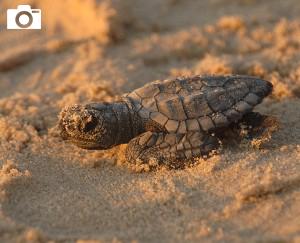Since the spill, the Trustees have been conducting many studies to assess the impacts of the spill on wildlife, including sea turtles. During the oil spill response, roughly 450 oiled turtles were found, rescued, and released back into the wild. We are continuing to look for potential injuries to turtles as a result of the oil spill.
The studies, which are part of the ongoing Natural Resource Damage Assessment (NRDA), build upon several long-running studies on endangered Kemp's ridley turtles. The extensive database of research on these turtles prior to the spill has allowed for comparison to post-spill data.
In the United States, the majority of Kemp's ridley turtles nest along the Mexico-Texas coast. Studies have included the analysis of more than 2,100 samples of unhatched eggs from nests at Padre Island National Seashore in Texas for exposure to oil from the spill.
Scientists fitted nesting female turtles with satellite transmitters to assess their exposure to Deepwater Horizon oil. After nesting season, most of the tracked turtles left Texas and traveled along the coast toward the northern or eastern Gulf of Mexico. Research has found that critical sea turtle foraging areas and migration routes overlap significantly with areas affected by oil from the spill.
Our researchers have also been examining nesting habits of the Kemp's ridley. Previous research found that nesting had increased steadily from the 1990s to 2009. The positive trend turned around abruptly beginning in 2010—the year of the spill—when nesting declined significantly. We found even fewer nests in 2013 and 2014, despite extensive searches by field biologists. In fact, 2014 nest numbers fell to an eight-year low.
The complete story is still unfolding. We will use data collected for the NRDA, along with other information, to determine the spill's impacts on sea turtles and their habitats and prey.


